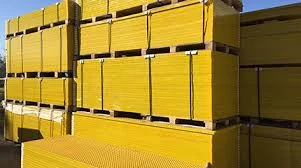
-
 Afrikaans
Afrikaans -
 Albanian
Albanian -
 Amharic
Amharic -
 Arabic
Arabic -
 Armenian
Armenian -
 Azerbaijani
Azerbaijani -
 Basque
Basque -
 Belarusian
Belarusian -
 Bengali
Bengali -
 Bosnian
Bosnian -
 Bulgarian
Bulgarian -
 Catalan
Catalan -
 Cebuano
Cebuano -
 China
China -
 China (Taiwan)
China (Taiwan) -
 Corsican
Corsican -
 Croatian
Croatian -
 Czech
Czech -
 Danish
Danish -
 Dutch
Dutch -
 English
English -
 Esperanto
Esperanto -
 Estonian
Estonian -
 Finnish
Finnish -
 French
French -
 Frisian
Frisian -
 Galician
Galician -
 Georgian
Georgian -
 German
German -
 Greek
Greek -
 Gujarati
Gujarati -
 Haitian Creole
Haitian Creole -
 hausa
hausa -
 hawaiian
hawaiian -
 Hebrew
Hebrew -
 Hindi
Hindi -
 Miao
Miao -
 Hungarian
Hungarian -
 Icelandic
Icelandic -
 igbo
igbo -
 Indonesian
Indonesian -
 irish
irish -
 Italian
Italian -
 Japanese
Japanese -
 Javanese
Javanese -
 Kannada
Kannada -
 kazakh
kazakh -
 Khmer
Khmer -
 Rwandese
Rwandese -
 Korean
Korean -
 Kurdish
Kurdish -
 Kyrgyz
Kyrgyz -
 Lao
Lao -
 Latin
Latin -
 Latvian
Latvian -
 Lithuanian
Lithuanian -
 Luxembourgish
Luxembourgish -
 Macedonian
Macedonian -
 Malgashi
Malgashi -
 Malay
Malay -
 Malayalam
Malayalam -
 Maltese
Maltese -
 Maori
Maori -
 Marathi
Marathi -
 Mongolian
Mongolian -
 Myanmar
Myanmar -
 Nepali
Nepali -
 Norwegian
Norwegian -
 Norwegian
Norwegian -
 Occitan
Occitan -
 Pashto
Pashto -
 Persian
Persian -
 Polish
Polish -
 Portuguese
Portuguese -
 Punjabi
Punjabi -
 Romanian
Romanian -
 Russian
Russian -
 Samoan
Samoan -
 Scottish Gaelic
Scottish Gaelic -
 Serbian
Serbian -
 Sesotho
Sesotho -
 Shona
Shona -
 Sindhi
Sindhi -
 Sinhala
Sinhala -
 Slovak
Slovak -
 Slovenian
Slovenian -
 Somali
Somali -
 Spanish
Spanish -
 Sundanese
Sundanese -
 Swahili
Swahili -
 Swedish
Swedish -
 Tagalog
Tagalog -
 Tajik
Tajik -
 Tamil
Tamil -
 Tatar
Tatar -
 Telugu
Telugu -
 Thai
Thai -
 Turkish
Turkish -
 Turkmen
Turkmen -
 Ukrainian
Ukrainian -
 Urdu
Urdu -
 Uighur
Uighur -
 Uzbek
Uzbek -
 Vietnamese
Vietnamese -
 Welsh
Welsh -
 Bantu
Bantu -
 Yiddish
Yiddish -
 Yoruba
Yoruba -
 Zulu
Zulu
Exploring Sustainable Solutions in FRP Housing Development and Design Trends
Exploring FRP Housing A Sustainable Future for Construction
Fiber Reinforced Polymer (FRP) is emerging as a transformative material in the construction industry, particularly in the housing sector. With the increasing need for sustainable building practices and innovative materials, FRP housing presents a promising solution that combines strength, durability, and environmental friendliness.
Exploring FRP Housing A Sustainable Future for Construction
Moreover, the durability of FRP materials is another compelling benefit. Unlike traditional building materials, FRP is resistant to corrosion, mold, and environmental degradation, which means that structures can last longer with minimal maintenance. This longevity not only enhances the lifespan of housing but also contributes to a significant reduction in waste generated from repairs and replacements. The longevity of FRP can lead to a smaller carbon footprint over the life cycle of a building, aligning with global efforts towards sustainability.
frp housing

FRP’s versatility is noteworthy, as it can be molded into various shapes and designs, allowing architects and builders to exercise creativity in their projects. The aesthetic appeal of FRP housing can cater to diverse design preferences, making it suitable for residential, commercial, and public buildings. With the rising demand for unique and modern housing designs, FRP's adaptability offers a competitive edge in the construction market.
Another crucial aspect of FRP housing is its thermal efficiency. The material inherently provides excellent insulation properties, leading to reduced energy consumption for heating and cooling. This feature can significantly lower utility bills for homeowners, making FRP not only an environmentally friendly choice but also an economically feasible one in the long run.
Despite these advantages, challenges remain in the wider adoption of FRP in mainstream housing construction. Awareness among builders and consumers about the benefits of FRP is still growing, and more research is necessary to fully explore its potential and overcome any limitations.
In conclusion, FRP housing stands at the forefront of innovative construction methods, driven by sustainability and efficiency. As the industry moves towards reducing its environmental impact, incorporating materials like FRP can play a pivotal role in creating a greener future for housing. With continued advancement and education, FRP could redefine the landscape of modern construction, making it a viable option for sustainable living.
Latest news
-
Exploring the Benefits of Top Hammer Drifter Rods for Enhanced Drilling PerformanceNewsJun.10,2025
-
High-Precision Fiberglass Winding Machine for GRP/FRP Pipe Production – Reliable & Efficient SolutionsNewsJun.10,2025
-
FRP Pipes & Fittings for Shipbuilding - Corrosion-Resistant & LightweightNewsJun.09,2025
-
Premium FRP Flooring Solutions Durable & Slip-ResistantNewsJun.09,2025
-
Premium Fiberglass Rectangular Tanks Durable & Lightweight SolutionNewsJun.09,2025
-
Tapered Drill String Design Guide Durable Performance & UsesNewsJun.09,2025









